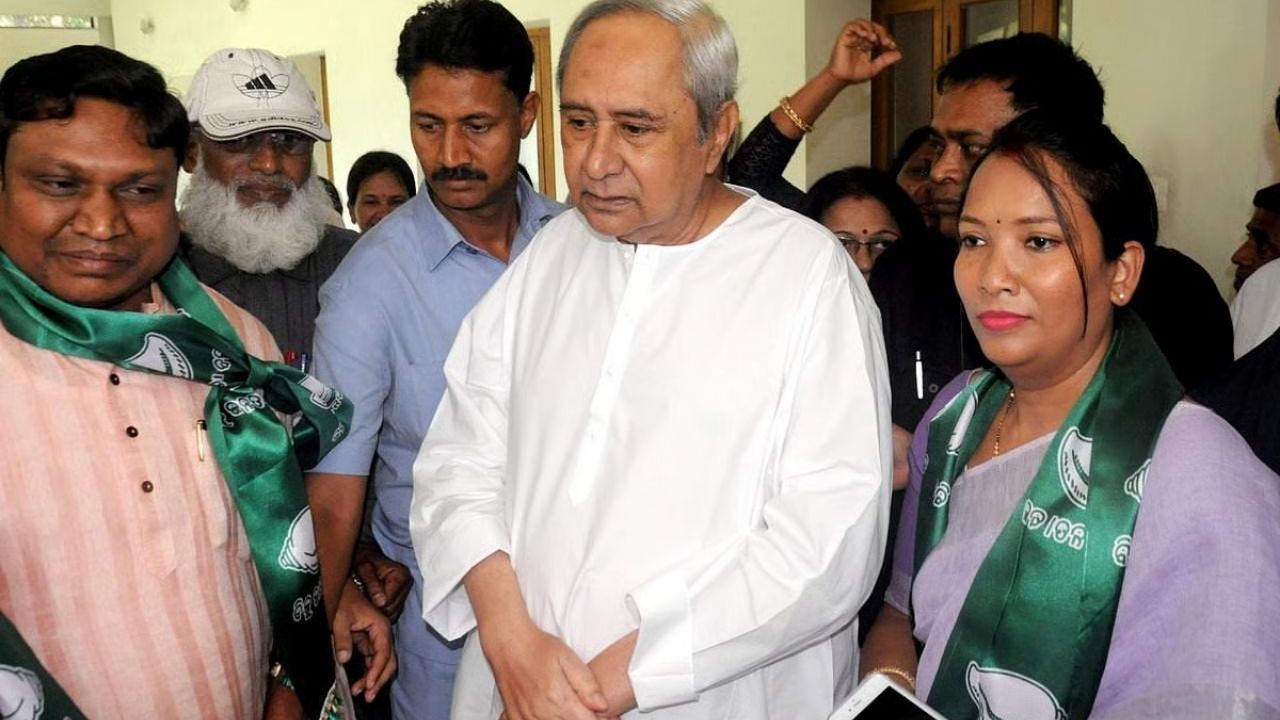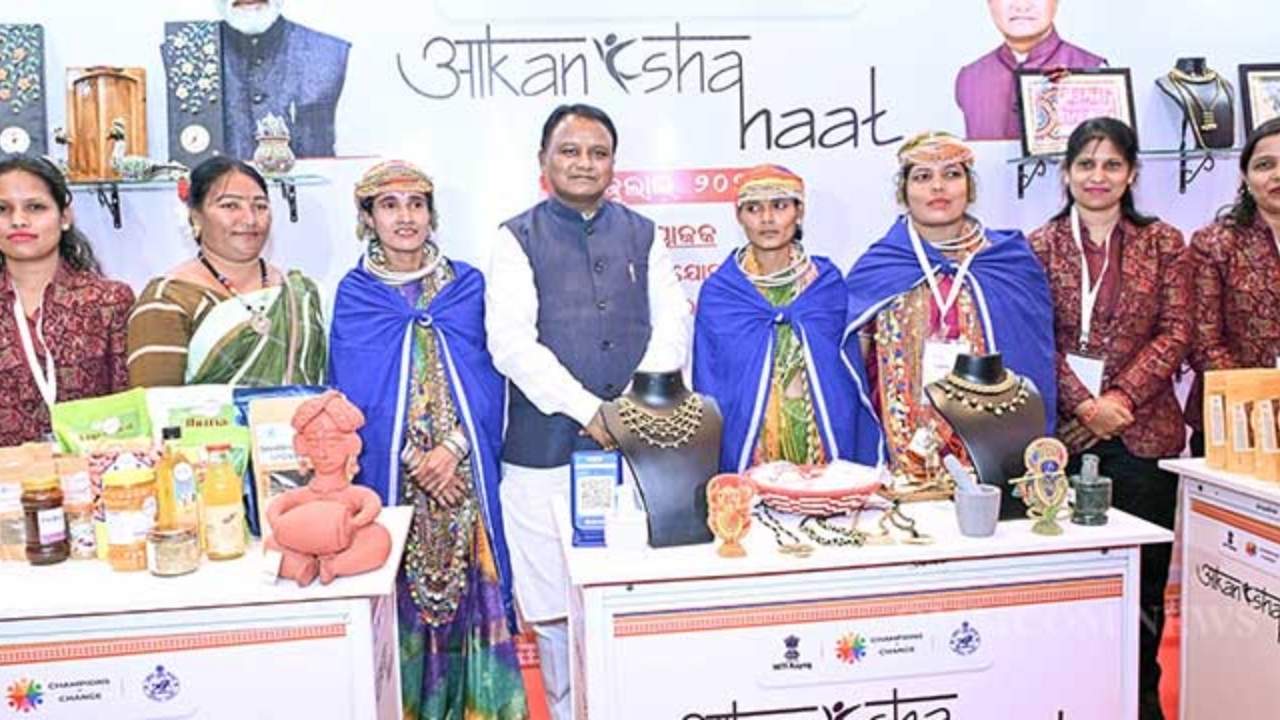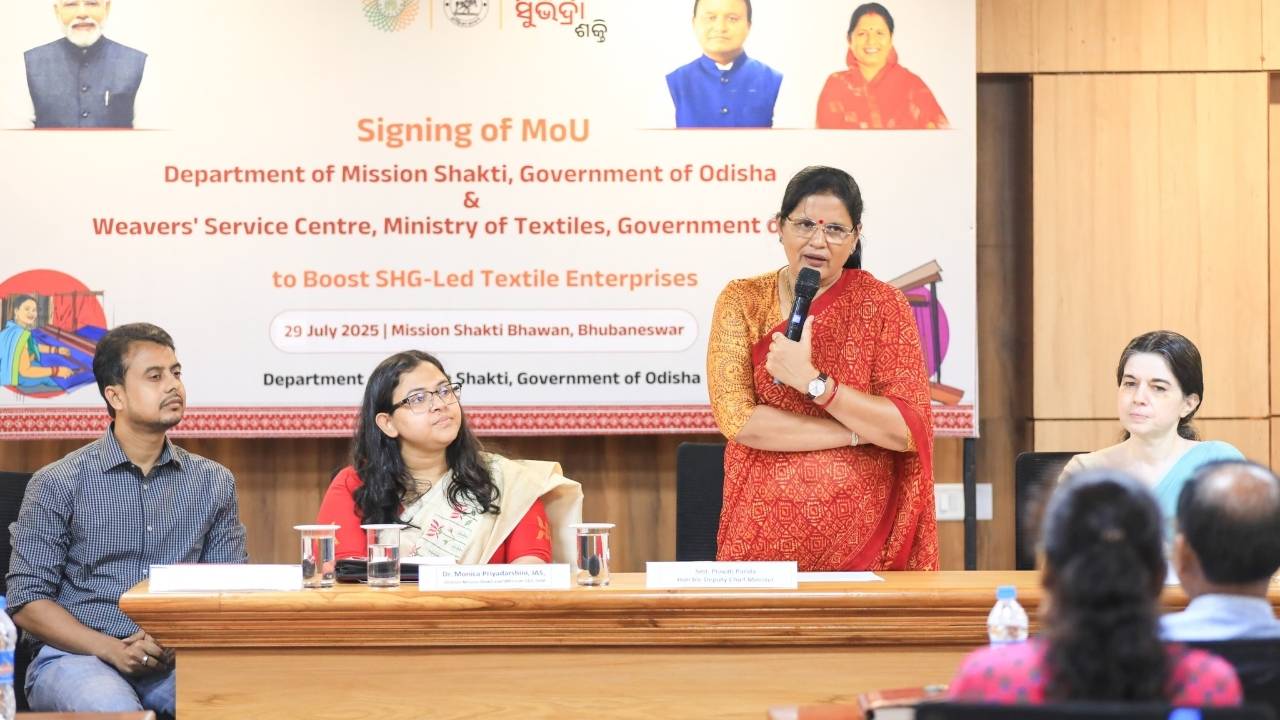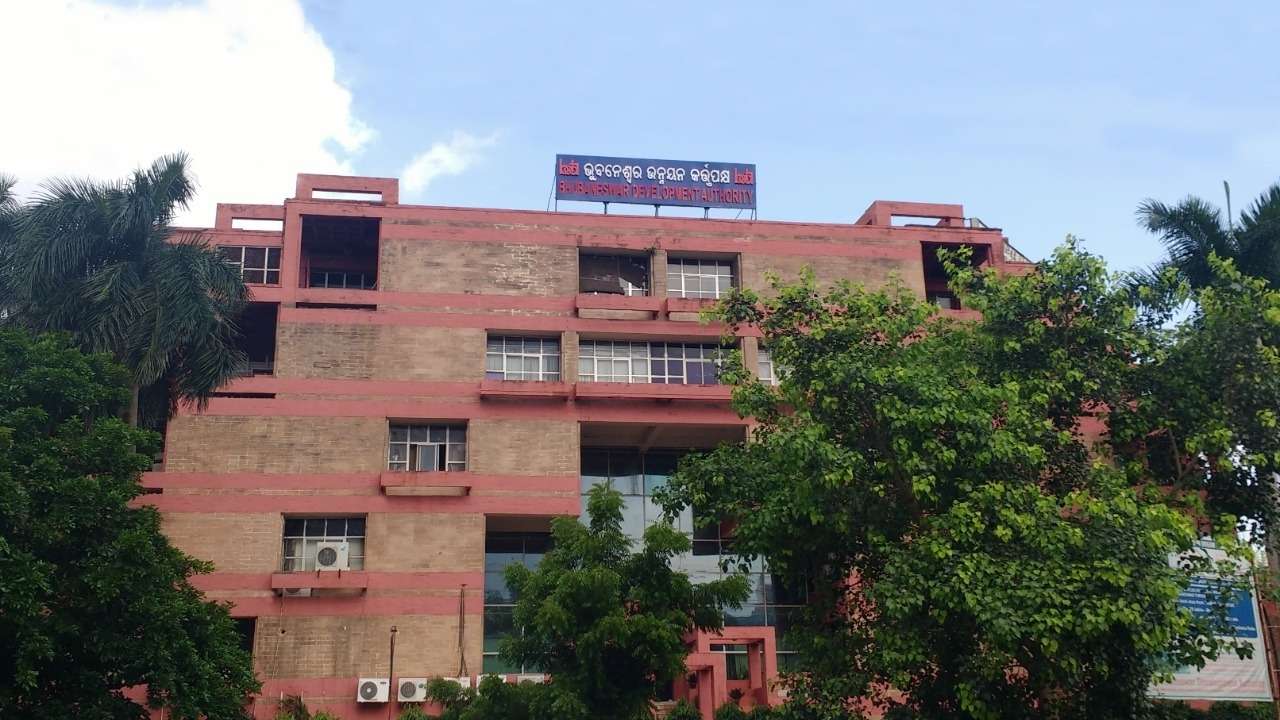In a significant political move, Sunita Biswal, daughter of former Odisha Chief Minister Hemananda Biswal, has made headlines by resigning from the Biju Janata Dal (BJD) and rejoining the Indian National Congress (INC). In her new role, Sunita is speaking out against the BJD’s women empowerment narrative, calling it “superficial” and “false.” This development is not just about a political shift, but it raises some important questions about the real effectiveness of women empowerment programs in political parties and governance. Let’s break down what this move means for the state of Odisha, political narratives, and women’s leadership in India.
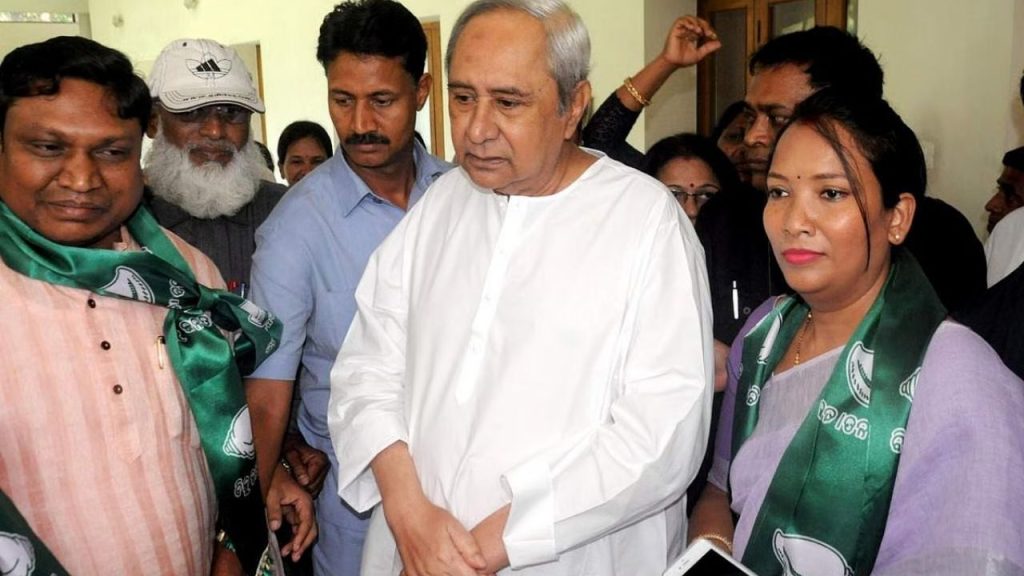
Sunita Biswal Slams BJD’s Women Empowerment
| Key Information | Details |
|---|---|
| Key Person | Sunita Biswal |
| Political Shift | Left BJD, joined Indian National Congress (INC) |
| Main Allegation | BJD’s women empowerment narrative is “superficial” and “false.” |
| Example Cited | Arati Devi, former Sarpanch of Ganjam, left BJD due to lack of opportunities. |
| Sunita’s Family Background | Daughter of former Odisha CM Hemananda Biswal |
| Sunita’s Commitment | Strengthening Congress in Sundargarh district, collaborating with her sister Amita Biswal. |
| BJD’s Response | Dismissed allegations, claimed her exit was due to inactivity and lack of organizational strength. |
| Impact on Congress | Could boost Congress momentum in Odisha with upcoming visits from Rahul Gandhi and Mallikarjun Kharge. |
| Official Reference | Odisha TV, New Indian Express, Sambad English |
Sunita Biswal’s bold decision to leave the BJD and return to Congress speaks volumes about the challenges women face in Indian politics. Despite the narrative of women’s empowerment, there is still much work to be done to ensure women have equal opportunities to lead and make decisions. Sunita’s move is a wake-up call for political parties across India to reassess their commitment to women’s representation and leadership. It also serves as an important reminder that for women to truly empower others, they must first be empowered themselves.
The Political Shift: A Personal and Professional Decision
Sunita Biswal’s decision to leave the ruling BJD (Biju Janata Dal) and rejoin the Indian National Congress (INC) has caused quite a stir in Odisha’s political circles. As a former member of the BJD and a prominent political figure herself, her move is more than just personal—it has implications for the larger political landscape of Odisha.
What sets this apart is her public critique of the BJD’s women empowerment narrative. For years, the BJD has prided itself on its efforts to promote women in politics, with claims of offering substantial opportunities for leadership roles. However, Sunita Biswal’s departure highlights a different reality—one where women are often used for appearances but are sidelined when it comes to real decision-making power.
Sunita’s accusations center around the idea that the party’s “Mahila Samman” initiatives are merely for show. According to her, while women’s representation in the party is showcased, they hold little to no sway in major decisions. This claim isn’t an isolated opinion—it reflects a growing dissatisfaction among women leaders in regional parties across India, who feel they are often relegated to symbolic positions.
A Real Example: Arati Devi’s Exit
One example Sunita Biswal points to is Arati Devi, a former Sarpanch from Ganjam district in Odisha. Arati Devi, who was once part of BJD, quit the party citing a lack of opportunities for women to rise to key leadership positions. Her experience mirrors Sunita’s own frustration, adding weight to her accusations that BJD’s women empowerment efforts were more about appearances than substance.
This incident also reveals the challenges many women face in the male-dominated world of Indian politics. Despite the public narrative of gender equality, the path to real power remains incredibly difficult for women, especially in regional parties like BJD, where leadership is often seen as the exclusive domain of men.
The Women Empowerment Narrative: Is It All for Show?
At the heart of Sunita Biswal’s criticism is a broader conversation about women empowerment in Indian politics. While parties across the country, including BJD, claim to champion women’s rights and equality, many wonder whether these efforts are truly effective or just politically convenient.
Women in India, especially in rural areas, have long been at the forefront of social change. From Indira Gandhi, India’s first female Prime Minister, to grassroots leaders in villages across the nation, women have shown that they have the strength and leadership skills to make a difference. Yet, despite these successes, the reality is that women’s representation in politics remains abysmally low compared to their male counterparts.
The Numbers: Where Does India Stand?
India ranks 148th globally in terms of women’s political participation, according to the Inter-Parliamentary Union (IPU). Only 14.4% of the seats in the Lok Sabha (the lower house of India’s Parliament) are held by women, and even fewer women hold significant leadership positions in political parties. This disparity highlights the gap between the rhetoric of women empowerment and the reality women face in politics.
For example, in Odisha, despite BJD’s claims of empowering women, the actual number of women in positions of power within the state’s political framework is relatively low. Sunita Biswal’s decision to speak out on this issue brings attention to a critical issue—whether political parties are genuinely committed to empowering women or just paying lip service to the idea.
What This Means for Congress and Odisha’s Political Landscape
Sunita Biswal’s return to Congress is more than just a family reunion. Her rejoining the Congress could provide a significant boost to the party, especially in the Sundargarh district, where she plans to strengthen the party’s presence alongside her sister Amita Biswal, who is also a member of the Odisha Pradesh Congress Committee.
This political shift also comes at a time when key Congress leaders like Rahul Gandhi and Mallikarjun Kharge are scheduled to visit Odisha. Sunita’s move could be a sign that Congress is gearing up for a stronger presence in the state, leveraging her family name and political acumen to challenge the dominance of BJD in the region.
BJD’s response has been dismissive, accusing Sunita of leaving because of inactivity and a lack of organizational strength in her district. However, many see this as a convenient defense to avoid addressing the underlying issue of women’s representation and empowerment within the party.
How Women Can Break Barriers in Politics: A Guide
For aspiring women leaders in India and around the world, breaking into politics can seem daunting. However, with the right strategies and support, women can create change in the political landscape.
1. Build a Strong Support Network
Women need to build a network of mentors, advisors, and allies within their political parties and communities. Having a solid support base can provide guidance and open doors to leadership roles.
2. Engage with the Community
Grassroots engagement is key to gaining visibility and support. Women who actively participate in community events and take on leadership roles at the local level often have more success in climbing the political ladder.
3. Challenge Gender Bias
In politics, women often face gender bias and stereotyping. Women should challenge these barriers by demonstrating their leadership abilities and staying focused on their goals.
4. Advocate for Equal Opportunities
Women should advocate for equal opportunities in their parties, pushing for more inclusive policies and representation. This includes demanding positions of power and influence, not just symbolic roles.
Congress Leaders to Hold Separate Meetings with Party Functionaries in Odisha
Manmohan Samal’s Return: BJP’s Strategy to Strengthen OBC Representation in Odisha
FAQs
1. Why did Sunita Biswal leave BJD?
Sunita Biswal left the BJD after criticizing its women empowerment initiatives as superficial and not providing real opportunities for women in leadership positions.
2. How does Sunita Biswal’s move affect Congress?
Her rejoining Congress is expected to strengthen the party in Odisha, especially in the Sundargarh district, and could provide a boost as Congress prepares for upcoming elections.
3. What is the state of women empowerment in Indian politics?
While political parties often claim to support women, women’s participation in key leadership roles remains low, with many facing systemic barriers to true empowerment.
4. How can women break into politics in India?
Women can break into politics by building a support network, engaging with their communities, challenging gender biases, and advocating for equal opportunities within their parties.

